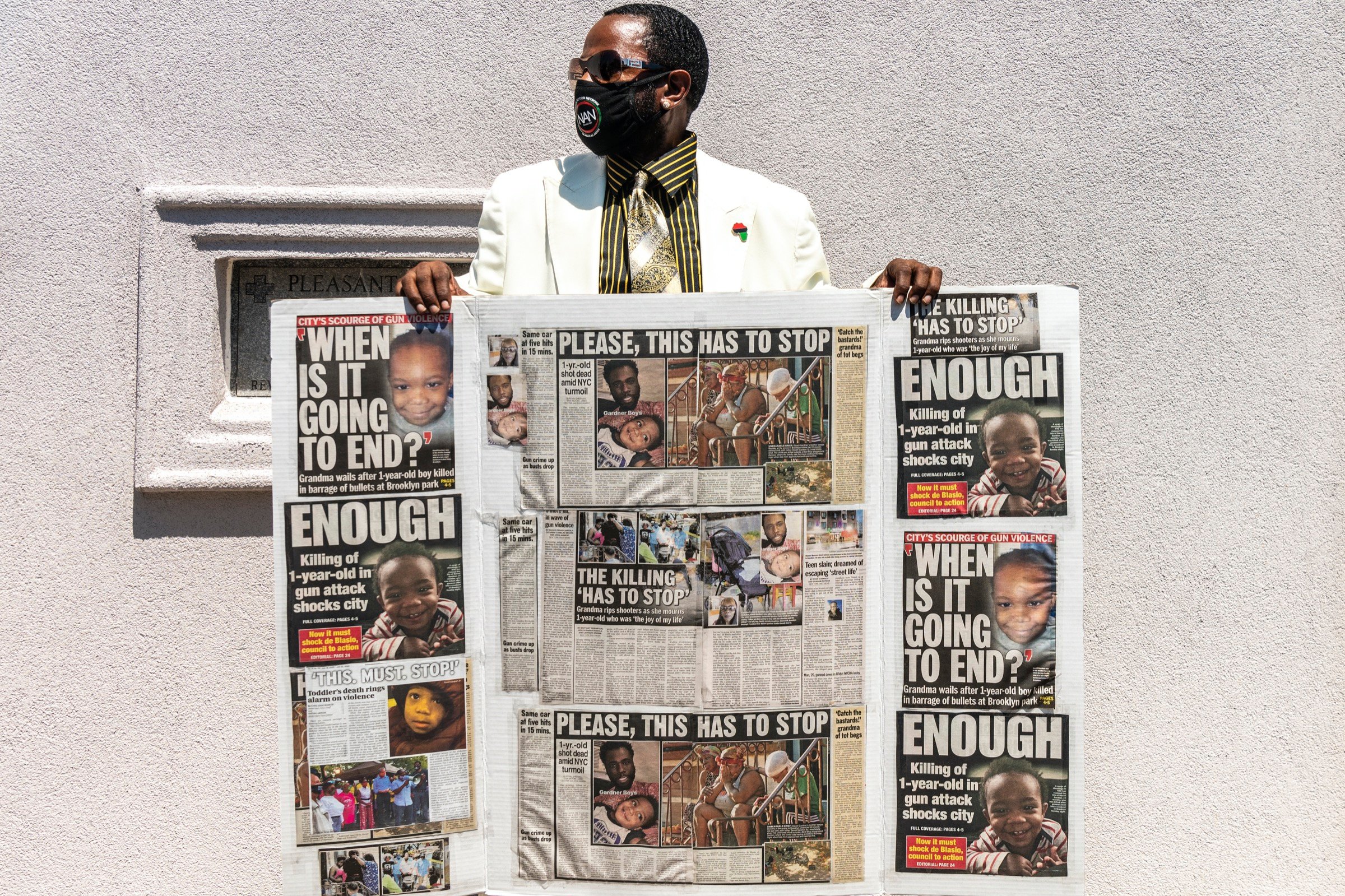Over the weekend, the National Rifle Association released a new video using the coronavirus pandemic to argue that guns are essential to protecting Americans from the threat of public disorder.
In the four-minute-long clip, Carletta Whiting, a disabled woman of color, wields an assault-style weapon and tells viewers, “You might be stockpiling up on food… to get through this current crisis, but if you aren’t preparing to defend yourself when everything goes wrong, you’re really just stockpiling for somebody else.” The video is interspersed with old clips of looting and social unrest. It goes on to warn that localities are using emergency decrees as a cover to seize guns during the current pandemic, citing recent moves by government officials in Champaign, Illinois, and New Orleans. (Both cities say they have no plans to use emergency powers to curtail sales or collect weapons.)
While today’s circumstances are unique, fear-driven messaging has been a central part of the NRA’s strategy for a long time:
2001: The NRA says 9/11 means civilians should arm themselves against terrorists
The coordinated airplane attacks made Americans acutely anxious about domestic terrorism — and in its aftermath, the NRA stoked fears of being vulnerable in the face of unseen danger. “People are unsettled in this country,” Wayne LaPierre, the group’s CEO, said two months later. “They hear warnings of other threats that could come at anytime from anywhere. And they don’t know if they might be on their own for a while if there is another attack.” NRA spokesperson Andrew Arulanandam later told ABC News: “It’s a natural feeling that after 9/11, people want to be proactive and take necessary actions to protect themselves and their loved ones in these uncertain times.”
2005: The NRA uses Hurricane Katrina to inflame fears of gun confiscation
During the days after the 2005 storm, New Orleans’s police superintendent decreed that “only law enforcement are allowed to have weapons” on the city’s ravaged, anarchic streets and officers were seen disarming some residents before they were evacuated. But a later review found that the New Orleans Police had taken only 552 guns into custody — a number that contrasts with the widespread, “door-to-door” confiscation that the NRA has claimed. Speaking to NPR at the time, LaPierre said: “I mean, the truth is never again can some politician look you in the eye and say with a straight face, ‘You don’t need a firearm because the government is going to be there to protect you.’ All you have to say is, ‘Remember New Orleans.'”
2012: The NRA seizes on another devastating storm to push guns to defend personal property
When Superstorm Sandy wreaked destruction on New York City, where gun laws are restrictive, LaPierre mischaracterized the aftermath in an op-ed by exaggerating incidents of theft. “We saw the hellish world that the gun prohibitionists see as their utopia,” he said. “Looters ran wild in south Brooklyn… It’s not paranoia to buy a gun. It’s survival.”
2017: The NRA turns political divisions into a call to arms
Following Trump’s inauguration, the NRA used speeches and its now defunct streaming channel to disseminate chaotic video clips that portrayed liberal activists as a violent force that posed a threat to gun-owning Americans. The NRA’s campaign included then-spokeswoman Dana Loesch’s infamous “Clenched Fist of Truth” ad, which demonized the Women’s March, among other targets.
2017: Another hurricane, and more ominous warnings of social chaos from the NRA
After Hurricane Harvey hit the Texan Gulf Coast in 2017, NRATV host Grant Stinchfield conjured the nightmarish consequences that would result from the next disaster: “When emergency personnel are pulled in every direction, do you have access to protection? … The thugs and thieves know that your vulnerability can be exploited.”
Later, the NRA backed a Texas law, enacted in 2019, that allows residents to carry handguns — openly or concealed — without a permit for a full week after a natural disaster is declared.

